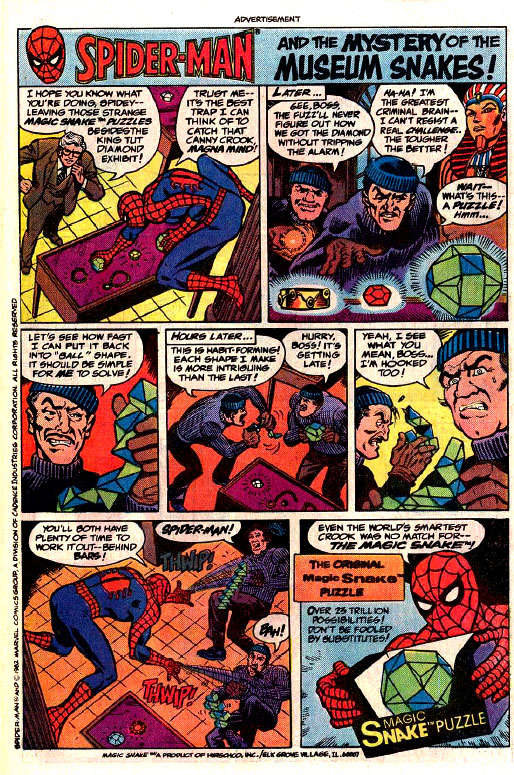
But what is this new puzzle? Let's read it in the words of its creator:
The snake is not a problem to be solved; it offers infinite possibilities of combination. It is a tool to test out ideas of shape in space. Speaking theoretically, the number of the snake's combinations is limited. But speaking practically, that number is limitless, and a lifetime is not sufficient to realize all of its possibilities.Snake is made of 24 prisms, lined up in a row with alternate orientation (up and upside down). Each prism can assume 4 different positions, each with a 90° deviation. Prisms usually have alternating colors.
The number of different forms that Snake can take is at least \(4^{23} = 70368744177664\), over than 70 trillion. But the real number of shapes is lower, because some configurations are spatially impossible, since they would require more than one prism to occupy the same region of space.


Spider-Man wasn't the only superhero to find magic snakes useful in crimefighting. There's also a Superman ad, a Batman ad, and a Hulk ad. I wouldn't be surprised if there were others I'm not aware of.
ReplyDeletehttps://comicvine.gamespot.com/profile/cbishop/lists/superman-in-the-case-of-the-snake-shapes-comic-ads/47673/